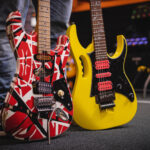As a content creator for guitarplayers.net, I’ve had my fair share of experiences with guitars across the price spectrum. I’ll admit, when it comes to budget-friendly instruments, especially those crafted overseas, my expectations are usually tempered. It’s easy to become accustomed to the nuances and refinements of higher-end guitars. However, the Jackson JS32-7Q Dinky arrived for review and challenged some of my preconceived notions about what a lower-priced guitar, or a “Dinky Guitar” as some might call it due to its smaller body, could offer.
My own guitar journey began with a very basic Squier Stratocaster. After progressing to an Epiphone Explorer and a few LTD models, I largely moved away from what I considered “cheap” guitars. Playing the Jackson JS32-7Q Dinky has made me reconsider that stance. Jackson is clearly doing something commendable with their entry-level range, creating instruments that punch above their weight class.
Jackson JS32-7Q Dinky: Detailed Specs
Before diving into the playing experience, let’s take a look at the specifications of this dinky guitar:
- Body: Basswood with Quilt Maple Top
- Neck: 3-Piece Bolt-On Maple with Graphite Reinforcement
- Scale Length: 26.5″
- Fretboard: Rosewood
- Binding: Fretboard and Headstock
- Bridge: Hipshot-Style Hardtail
- Pickup Selector: 3-Way Switch
- Controls: Volume and Tone Knobs
- Pickups: Jackson® High Output 7 String Humbuckers
- Finishes: Tobacco Burst, Natural
First Impressions and Key Features of the JS32-7Q Dinky
The natural finish Jackson JS32-7Q Dinky was the model sent for review. While the tobacco burst finish might have been my personal preference aesthetically, the natural finish still presents a respectable appearance. In fact, my girlfriend, perhaps in a playful jab at my collection, remarked that it looked better than some of my more expensive guitars. Ouch.
Striking Looks and Design Details
The quilted maple veneer, though thin, adds a touch of visual depth and appeal. A pleasant surprise for a guitar at this price point was the recessed Volume and Tone knobs, a detail often overlooked on entry-level instruments.
Solid and Comfortable Bridge
The Hipshot-style hardtail bridge feels robust and comfortable under the hand. Interestingly, I found myself slightly preferring it to the copycat bridge found on the LTD AW-7, which I had reviewed previously. The economics of sourcing a Hipshot-style bridge from overseas versus using genuine Hipshot hardware is a question worth pondering. Perhaps someone in the comments section can shed some light on this!
One minor aesthetic critique: the pickup rings. To my eye, pickup rings can look somewhat out of place on 7-string guitars. Notably, they are absent on the tobacco burst version of the JS32-7Q, so their inclusion on the natural finish model seems like an odd choice. This is admittedly a subjective point, but I’d argue the tobacco burst version boasts a cleaner, more streamlined look.
Fast and Shred-Ready Neck
The neck was the standout feature of the JS32-7Q Dinky. It boasts a thin profile with a flat, comfortably rounded D-shape. The extended 26.5″ scale length is a personal preference for my 7-string guitars, offering excellent string tension for lower tunings. Similar to the Chris Broderick signature model I reviewed earlier, the neck has a matte, natural-feeling finish that contributes to a fast and “shreddy” playing experience. It feels reminiscent of an oil finish, much like the neck on the Jackson DKA8.
The fretwork is surprisingly decent, exceeding the quality found on some guitars in higher price brackets. The 24 jumbo frets are precisely what you’d expect and want for this style of guitar – well-sized and conducive to fast playing.
Jackson opted for a relatively dark and visually appealing rosewood for the fretboard on the JS32-7Q Dinky. Combined with the Piranha inlays, the neck has a surprisingly premium aesthetic for a dinky guitar in this price range.
Tuners and Hardware
The tuners are functional and get the job done. However, they are likely to be one of the first components a player might consider upgrading down the line, especially for players demanding rock-solid tuning stability under heavy use.
Body Construction and Wood
Turning the guitar over reveals the back. While you shouldn’t anticipate a flawlessly figured, single piece of wood on a guitar in this category, this particular review unit had a rather unique quirk. It appears a piece of flamed basswood found its way into the body construction. I wasn’t even aware flamed basswood was a thing, initially mistaking it for flamed maple. It’s an unusual, almost glitch-like feature that adds a touch of unexpected character. It’s important to note that this is likely an anomaly, and most JS32-7Q Dinkys will likely feature a more standard 3-piece basswood body.
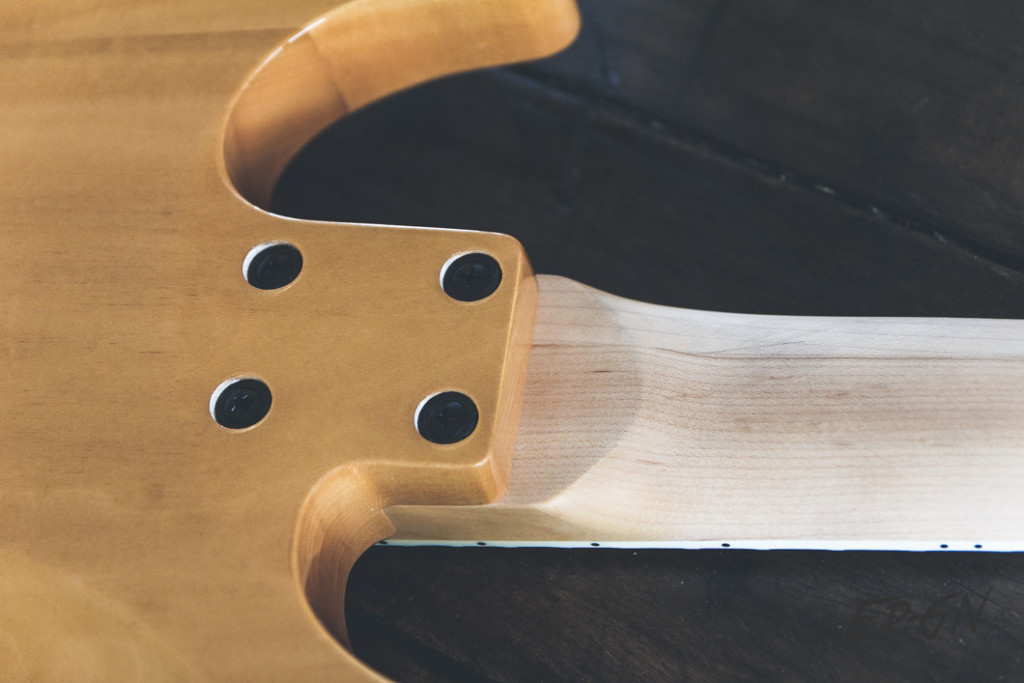 Close-up of the Jackson JS32-7Q Dinky guitar body, showcasing its flamed basswood and bolt-on neck joint, a dinky guitar design element.
Close-up of the Jackson JS32-7Q Dinky guitar body, showcasing its flamed basswood and bolt-on neck joint, a dinky guitar design element.
Neck Joint and Upper Fret Access
The traditional, bulky Jackson-style bolt-on neck joint is a matter of personal preference. While it might slightly hinder access to the highest frets compared to more modern contoured joints, countless legendary guitarists have achieved incredible feats on guitars with similar classic Fender-style neck joints. While I personally lean towards an All-Access Neck Joint (AANJ) for enhanced upper fret access, I’ve come to appreciate the robustness of the block-style joint over time. Ideally, a flattened version like that found on the Jackson DKA8 would be a welcome refinement.
Sound Quality and Performance
Again, my expectations for the Jackson High-Output humbuckers were modest. Plugging the JS32-7Q Dinky into my Kemper profiling amp yielded a pleasant surprise.
Stock Pickups and Tone
Out of the box, the Jackson JS32-7 Dinky produces a sound that is more than adequate for beginners. While it may lack some low-end punch, and the lower frequencies can get a touch muddy, the overall tonal performance is perfectly acceptable, especially considering the guitar’s affordable price.
Potential Upgrades for Enhanced Sound
For players intending to use the JS32-7Q Dinky in a live band setting, upgrading the pickups would be a worthwhile investment. Opting for pickups with a tighter low-end response would likely be the priority. While swapping pickups, upgrading the electronics – potentiometers and capacitors – could also be considered. Given the guitar’s street price, the cost of these upgrades remains reasonable and can significantly enhance its performance.
Sound samples were recorded using my standard, unaltered Peavey 5150 profile on my Kemper, providing a consistent baseline for evaluation.
Final Verdict: Is the Jackson JS32-7Q Dinky Worth It?
I was genuinely impressed by the comfort and playability of the Jackson JS32-7Q Dinky. As a beginner guitarist, starting out with an instrument like this would have been a dream. It’s a guitar I would wholeheartedly recommend to players just starting their 7-string journey or anyone seeking an affordable dinky guitar.
Furthermore, the JS32-7Q Dinky presents itself as an excellent candidate for a budget-friendly backup guitar. With a few strategic upgrades, such as pickup and tuner replacements, it could easily become a reliable and gig-worthy workhorse.
It’s crucial to remember that the JS32-7Q Dinky is still an entry-level instrument. The fretwork is good but not exceptional, the hardware is basic, and minor cosmetic imperfections might be present. However, the Jackson JS32-7Q Dinky is undeniably a solid and capable dinky guitar that delivers exceptional value for its price point.
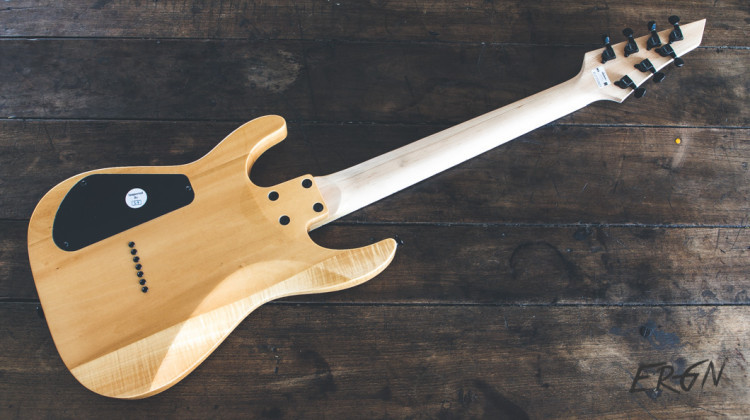 Jackson JS32-7 Dinky headstock close-up, showcasing tuners and Jackson logo on a dinky guitar.
Jackson JS32-7 Dinky headstock close-up, showcasing tuners and Jackson logo on a dinky guitar.
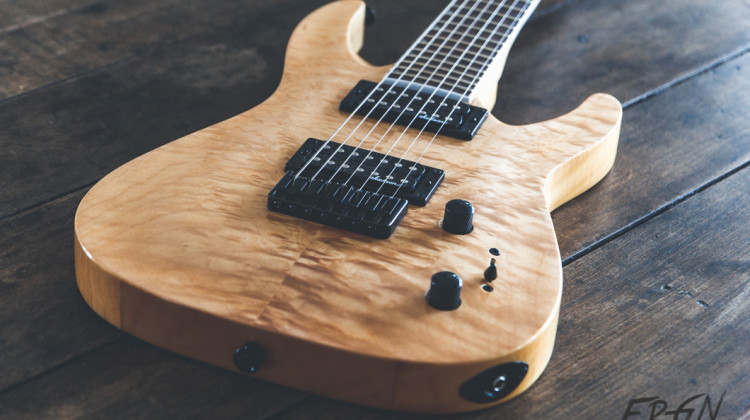 Full body shot of the Jackson JS32-7Q Dinky guitar in natural finish, highlighting the dinky body shape.
Full body shot of the Jackson JS32-7Q Dinky guitar in natural finish, highlighting the dinky body shape.
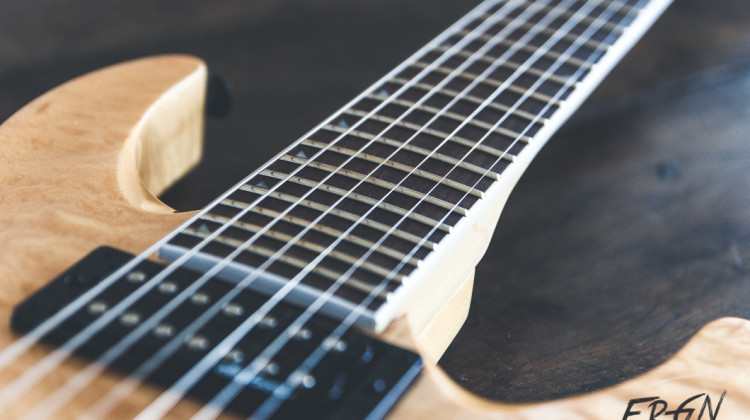 Close-up of the Jackson JS32-7Q Dinky's quilt maple top and humbucker pickups, features of a dinky guitar designed for rock and metal.
Close-up of the Jackson JS32-7Q Dinky's quilt maple top and humbucker pickups, features of a dinky guitar designed for rock and metal.
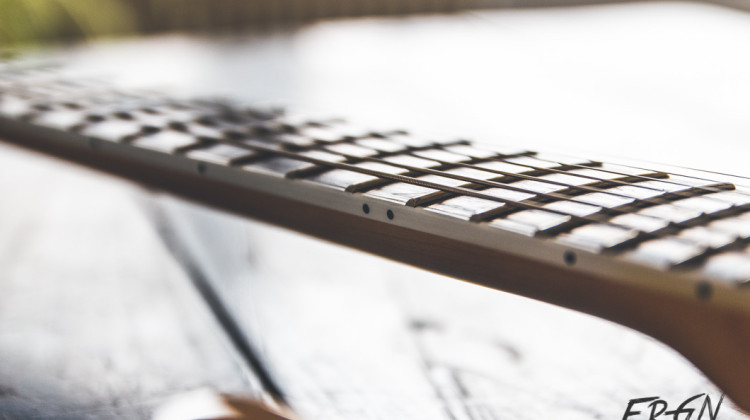 Image showing the Jackson JS32-7Q Dinky guitar's neck profile and fretboard inlays, emphasizing playability of this dinky guitar.
Image showing the Jackson JS32-7Q Dinky guitar's neck profile and fretboard inlays, emphasizing playability of this dinky guitar.
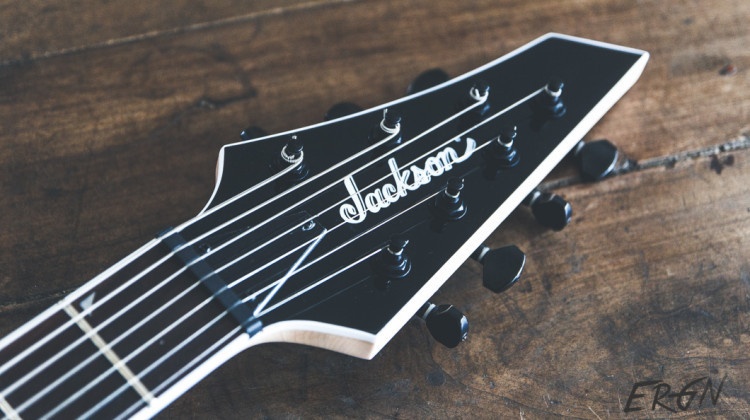 Rear view of the Jackson JS32-7Q Dinky guitar, showing the bolt-on neck construction and body contours of a dinky guitar.
Rear view of the Jackson JS32-7Q Dinky guitar, showing the bolt-on neck construction and body contours of a dinky guitar.
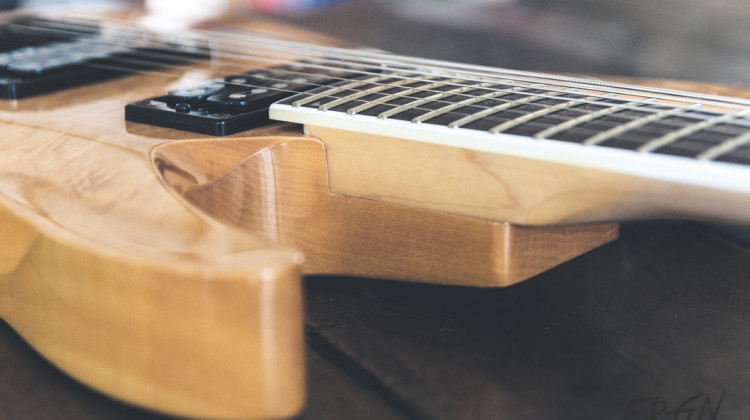 Detail of the Jackson JS32-7Q Dinky bridge and controls, highlighting the hardware components of this dinky guitar.
Detail of the Jackson JS32-7Q Dinky bridge and controls, highlighting the hardware components of this dinky guitar.
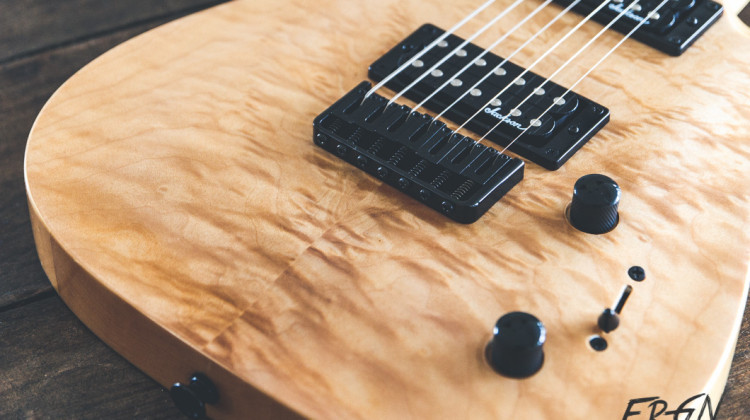 Angle shot of the Jackson JS32-7Q Dinky emphasizing the body shape and natural finish, demonstrating the aesthetics of a dinky guitar.
Angle shot of the Jackson JS32-7Q Dinky emphasizing the body shape and natural finish, demonstrating the aesthetics of a dinky guitar.
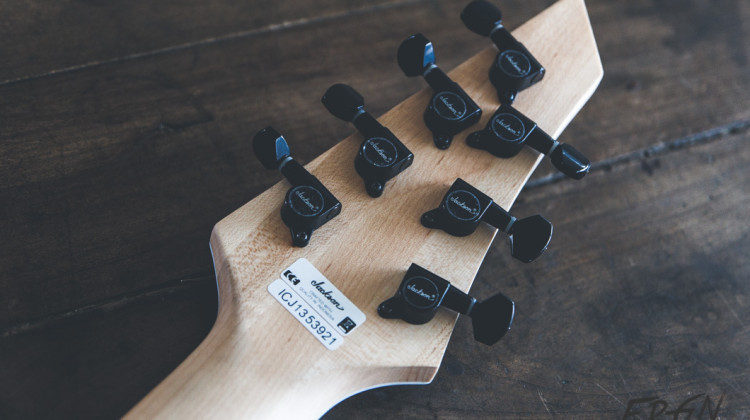 Close-up of the Jackson JS32-7Q Dinky fretboard and piranha inlays, showcasing the visual details of a dinky guitar neck.
Close-up of the Jackson JS32-7Q Dinky fretboard and piranha inlays, showcasing the visual details of a dinky guitar neck.
[

